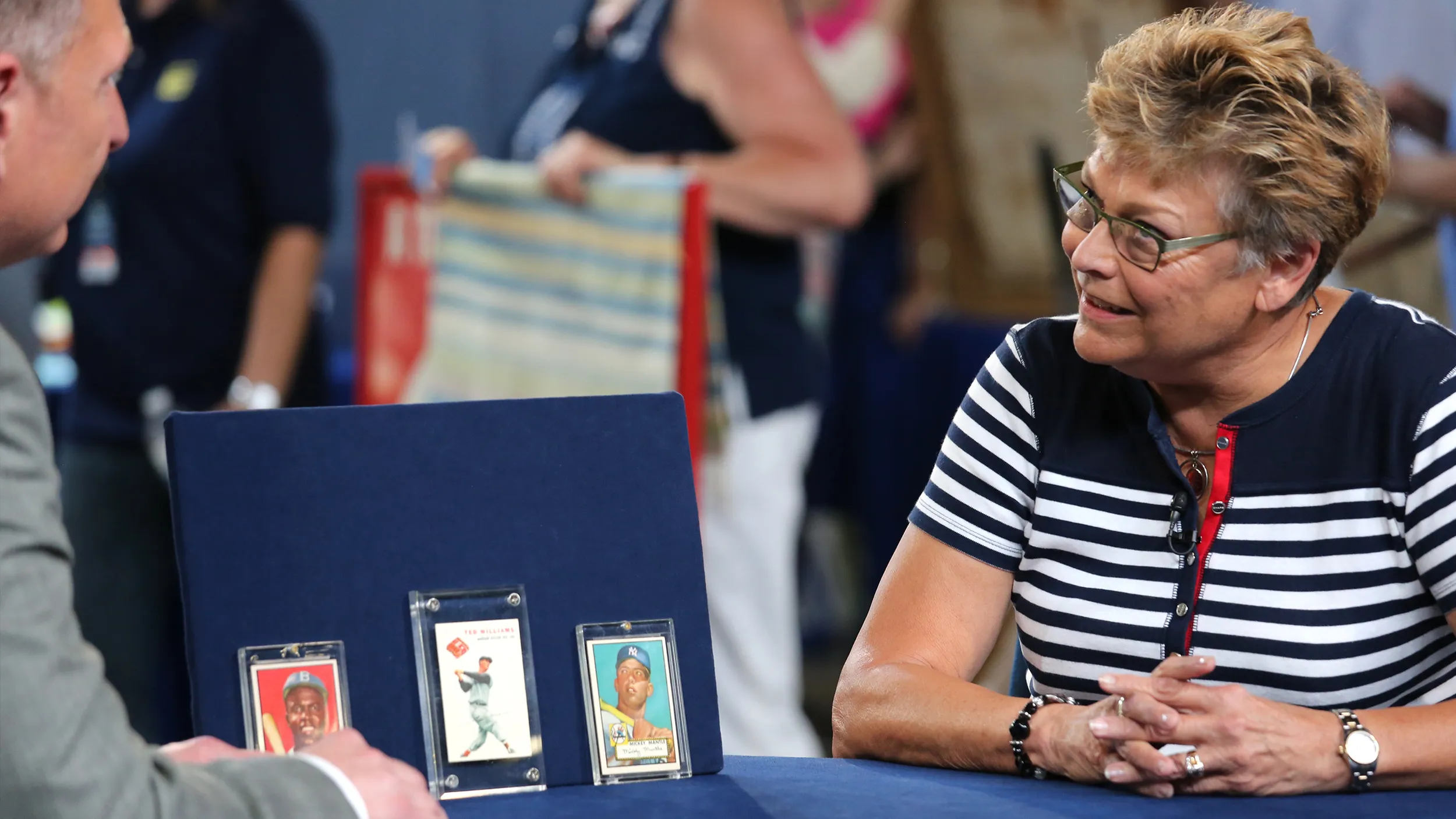GUEST: My father traded a service to the Winnebagos who lived next to us, and we traded the service, they gave him this. They worked on our farm, they lived around us, we went to their powwows when I was younger. We were a closely knit little community, a rural community.
APPRAISER: Okay.
GUEST: But we have equipment there-- he must have fixed something for them.
APPRAISER: He must have done something that was very much appreciated because this is a significant object. It's quite interesting. Can you tell us when you, when it came into your possession?
GUEST: My understanding, it was the late '50s, early '60s.
APPRAISER: So you've had it 60, 65 years.
GUEST: It's been around the family.
APPRAISER: Winnebago, you thought.
GUEST: That's who gave it to us.
APPRAISER: Okay, it's actually Cheyenne. Cheyenne Indians from the Great Plains. They're really well-known for their decorated cradleboards. And this cradleboard is gigantic.
GUEST: It is.
APPRAISER: I measured it. It's roughly four-and-a-half feet-- it's really big. These are called skis. They're typically decorated with brass tacks. In this case, they're steel. And that's an indication that maybe it's a little bit later than the height of this tradition. The most famous of these and the most fully developed, maybe in, more or less in the 1870s.
GUEST: Oh.
APPRAISER: My sense of this is it's a little bit later-- 1890, possibly as late as 1900. The beadwork is classic Cheyenne design. In 1870, these beads would have been stitched with sinew, animal sinew.
GUEST: Yep.
APPRAISER: These are stitched with cotton thread. There are elements of Native tanned hide, but most of the backing and most of the foundation is canvas. So that would be a trade item rather than deer hide from an earlier period. But the designs are classic Cheyenne that carried over from the mid-19th century to the end of the century. So the lady who made this is very much honoring ancient traditions, ancient design symbols. This is meant to protect a baby.
GUEST: Yes.
APPRAISER: So this big hood, which should come all the way up like this, would protect the child from sunlight. If it fell, this would catch the ground and protect the head. It's a little bit tired in terms of condition. The cotton string has broken down a little bit, some of the beads are missing, it's a little bit dirty, it's a little stiff in spots. All of that can be remedied. These are very desirable. It's a little bit late, it needs a little bit of help, but I think on a retail basis today, this would sell for $25,000 to $30,000. And the person who acquired it, I think, would be thrilled to own it.
GUEST: (laughs) My...
APPRAISER: For not too, too much money, given that value, it could be restored, and you could add another 20% of value. Maybe get it up to $35,000, $40,000.
GUEST: Fantastic. (chuckles) Dad would have never thought that.



